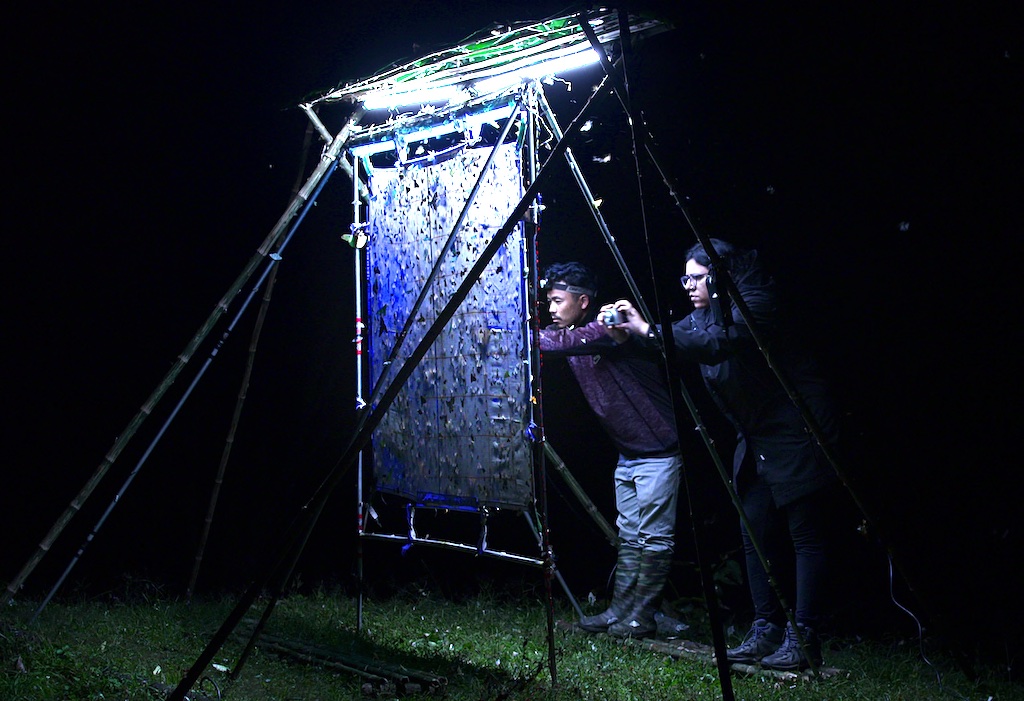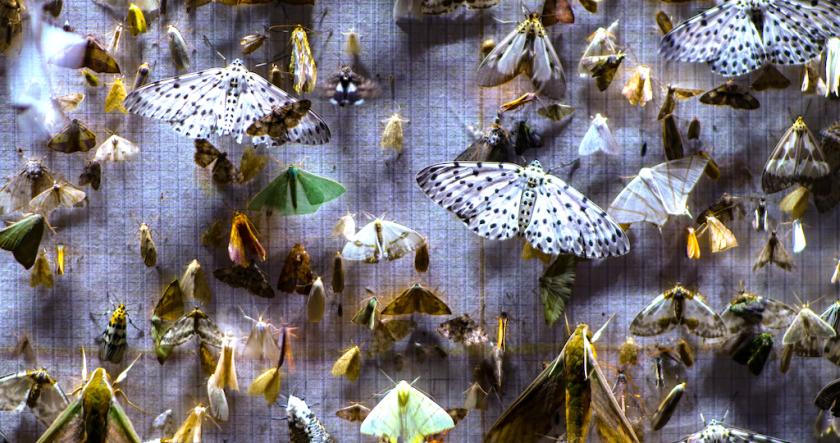If you suffer from lepidopterophobia, this film will either cure your fear of moths or push you over the edge. Warning: the screen is often filled with moths of every shape, size, colour and pattern while the sound of flapping, fluttering and girating wings fills the air to the point where you feel bombarded by the flying, furry creatures.
Mansi Mungee is researching the prevalence of hawk moths in the Eastern Himalayas. With her assistant, Bicki (Gendan Marphew) from the local Bugun community, she sets up moth screens in various locations in the rainforest, then they sit and wait for the critters to land so they can count and photograph them.
Choosing the right spot is crucial. Factors like temperature, humidity, wind and rain influence the number of moths flitting about and, on the heavily wooded slopes of these mountains, the weather is decidedly unpredictable. The pair also have a window of about 10 days after each new moon during which the lights used to attract the moths are bright enough to compete with moonlight.
After some frustrating failures in which too many variables are at play, it becomes clear that a more systematic approach is needed. The new plan is to set up screens every 200 meters along a track that winds its way from 500 to 2,800 metres up the mountainside. Their goal is to take 400 photographs at each site; this will allow Mansi to determine at what altitude hawk moths are most prevalent and to establish whether elevation influences their size. Even though two other locals have joined the team, the project will take months to complete.
Mansi’s research is undoubtedly worthwhile, but does it make for a good film? Given that the team spend much of their time waiting for nightfall then peering for hours at a screen which provides a tiny pool of light in inky darkness, directors Anirban Dutta and Anupama Srinivasan have their work cut out to make the subject interesting to watch.
Luckily the visuals are stunning; hundreds of moths of all shapes and sizes congregate on the screen each night, some settling into absolute stillness, some wandering listlessly about and others vibrating their wings at incredible speed to keep warm. “It’s a surreal experience”, say Mansi of this fascinating but somewhat creepy sight. No matter how astounding the moths are in their variety, though, being cheek by jowl with a screen heaving with insects can get claustrophobic, especially as the sound of hundreds of pairs of wings pulsating in one’s ears is freakishly loud. Respite from the insistent noise comes in the form of expansive views of the forest with mist wafting over the canopy or seeping through branches to shroud everything in ghostly vapour.
No matter how astounding the moths are in their variety, though, being cheek by jowl with a screen heaving with insects can get claustrophobic, especially as the sound of hundreds of pairs of wings pulsating in one’s ears is freakishly loud. Respite from the insistent noise comes in the form of expansive views of the forest with mist wafting over the canopy or seeping through branches to shroud everything in ghostly vapour.
The tranquility is soon disrupted by the drama of a violent thunder storm, a family of elephants noisily foraging among the trees and footage of the team clearing fallen rocks from the track or wading through cascading water. Shots of dwellings perched on the mountainside indicate a human presence and it would have been good to meet the villagers and learn something of their life in this remote region of North East India.
The evocative sound track is what binds the film together, though. Filling one’s head are Sukanta Majumdar’s recordings of rainforest animals, birds and insects along with the intense whirring of moth wings. Add to this natural soundscape the eerie music of composer, Nainita Desai and the experience is magically atmospheric. To get the full experience, watch it on a cinema screen.
Mansi’s fascination with moths comes from the fact that they’ve been on earth for 300 million years and, having survived five mass extinctions, number 150,000 species. “Humans are newcomers,” she concludes, “and most likely cannot survive what the moths have been through.” Her research reveals that large hawk moths prefer the coolness of higher altitudes and the film ends with her question: “What will happen as the temperature rises? Will moths start shifting upslope and will the birds that feed on them follow? And will the snakes or reptiles and mammals that feed on the birds start shifting? And what will happen when all these groups finally reach the tip of the mountain? They have no where else to go.”
The screen goes dark, but the sounds of the forest continue.














Add comment